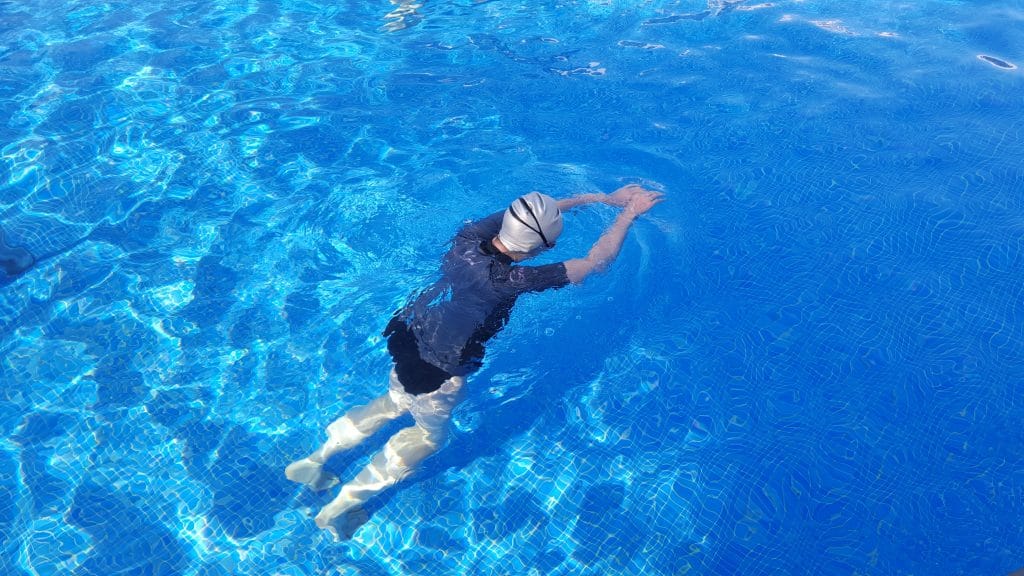In water, as on land, in order to feel comfortable, be able to relax and breathe, you need to feel balanced. As humans, unable to fly, we need support either from the floor or the water.
When nervous swimmers set off to swim or glide, they typically launch themselves from the wall and brace themselves for a turbulent ride. Without feeling balanced or supported they take off across the surface (often above the surface!) hoping to ‘land’ safely. A deep breath and lurch forwards is a result of not feeling the support of the water and no longer being in contact with the floor. From this start, any movement will be erratic and the breath will be held or forced out in a gush. The experience won’t be a pleasant one. When movements are rushed, there’s usually a panicky landing.
More confident swimmers also tend to set off without a thought to how comfortable their take off is, more interested in their first stroke than in a settled initial glide. They may be able to find a relaxed stroke but are unlikely to be aware of the tension caused by the wobbly start.
Think about your take-off
If both your feet are on the wall and your head is out of the water, you’re not comfortable! You’ve probably got your arms twisted behind you holding on (to the wall – and your breath) until you can’t help but throw yourself forward, trying to hold yourself up in mid air.
Make sure your first thought is where the weight of your head is. If you’re dropping it into the support of the water, you’ll feel balanced and able to organise your arms, in front of you, and your feet, for a gentle push, without the need to try and hold yourself up. If you’re in your depth, the smoothest take off will probably be from both feet on the floor, rather than the wall. From this comfortable start, the outbreath will remain relaxed, movements will be freer – more sustainable.
This applies, perhaps even more so, when taking off on the back. Very often, swimmers will rise up backwards into the air, before coming down for a crash landing.
With your feet on the floor and your arms resting by your sides, you’ll find the support of the water by resting your weight into a nice open back. Keep everything as low in the water as you can and as you lay your head back, your ears remain under the surface as you set off. If your ears are above the surface, you won’t feel balanced – you’re in that ‘no man’s land’ place – not supported by the floor, not supported by the water and not able to fly!
A smooth take off makes for a comfortable, relaxed journey ending in a safe landing.


